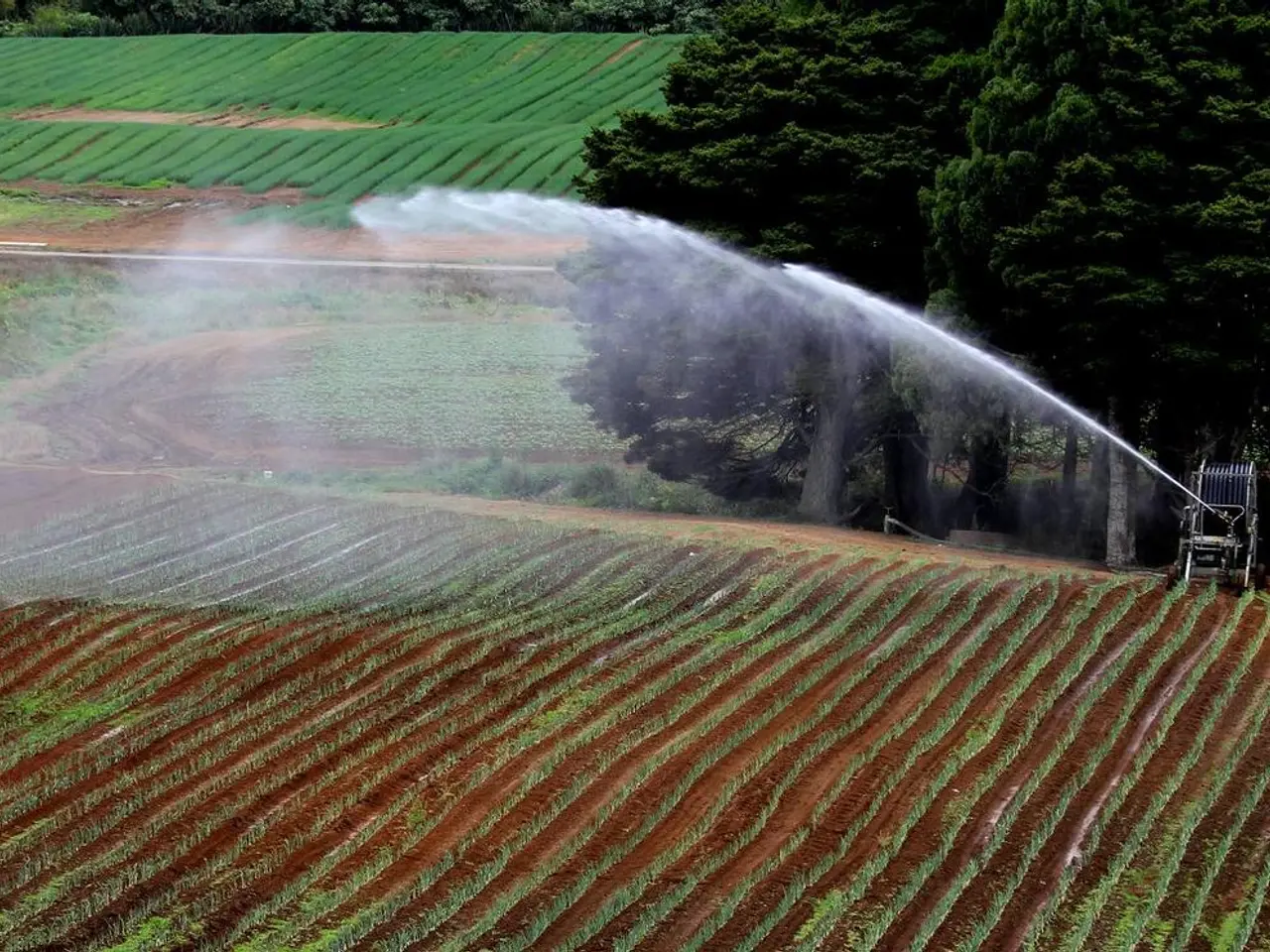Cultivating Garden Earth
Maintaining a healthy and productive home garden begins with understanding the soil. Here are some essential practices for soil testing, amendments, and fertilizer application to ensure your garden thrives.
Soil Testing
It's recommended to test your garden soil at least once a year before planting, ideally in the spring. This helps monitor pH and nutrient levels such as nitrogen, phosphorus, and potassium [1][3]. For new gardens, a comprehensive lab test every 2-3 years establishes a baseline, while routine annual checks using at-home test kits help with pH monitoring and basic nutrient screening [2].
Proper sampling is crucial for accurate soil testing. Collect soil from 5-7 different spots within the garden area, mix thoroughly, remove debris, and sample to a consistent depth of about 6 inches [2][3]. Avoid areas affected by compost piles or recent fertilizer applications to prevent skewed results [2].
Soil Amendments
Based on soil test results, tailor your soil amendments accordingly. Amendments should be used to correct pH imbalances and replenish deficient nutrients. For example, lime can raise soil pH, sulfur can lower it, and organic matter improves soil structure and nutrient retention [1][3].
Fertilizer Application
Fertilizer application should match the nutrient needs identified in the soil test. Applying nitrogen, phosphorus, and potassium at appropriate rates and times promotes healthy growth without waste. Regular monitoring through soil testing ensures ongoing soil fertility and helps correct any deficiencies or imbalances before they affect plants [1][3].
Other Considerations
- Various cover crops can be planted and tilled into the soil to increase organic matter.
- Many garden plants benefit from fertilizer applications. The rate and frequency of application depend on the nutrient analysis of the fertilizer, plant species, soil type, and other environmental factors.
- Using well-composted manure reduces pathogens, odor, and risks of fertilizer burn.
- Most plants thrive in well-drained soils. If soil drainage is a concern, conduct a percolation test and take steps to improve the soil conditions.
- Most vegetables and other plants grow best in slightly acidic soil with a pH of 6.0 to 6.8.
- When soils are not managed well, they can become compacted, limiting the air and water that can move into the soil.
- All plants require 17 essential mineral nutrients to grow and complete their life cycle.
- Apply composted manures in the fall, and wait 90-120 days before harvesting edible crops that come into contact with soil (120 days for carrots and lettuce, 90 days for corn and peppers).
Fertilizer Analysis
The first number in a fertilizer analysis indicates the percentage of the fertilizer's weight is nitrogen. Coarse materials like tree leaves, lawn clippings, peat, sawdust, straw, chipped limbs, and other plant materials are good sources of organic matter. Mix undecayed plant materials thoroughly with the top 6 inches of soil, incorporating no more than 2 inches per year.
When a sizable quantity of sawdust or other coarse fibrous material is added to soil, extra nitrogen must be applied. Once the rate and type of fertilizer are known, the amount of fertilizer needed can be determined and applied.
Additional Resources
More information can be found in articles about garden soil management, soil testing resources for home gardeners, creating raised bed planters, and composting yard waste. Fall is the preferred time to add yard waste or sawdust as it allows partial decomposition of the material, releasing essential plant nutrients before the following growing season.
- To maintain a healthy home garden, it's advisable to test the soil at least once a year before planting, particularly in spring.
- Soil testing involves collecting samples from 5-7 different spots within the garden area, ensuring a consistent depth of about 6 inches for accurate results.
- Based on soil test results, amendments such as lime for raising pH, sulfur for lowering it, and organic matter for improving soil structure should be used to correct imbalances and replenish nutrients.
- Composting, whether through at-home methods or professionally-made compost, can provide beneficial nutrients to the soil and reduce waste in the home-and-garden lifestyle.
- Fertilizer application should match the nutrient needs identified in the soil test to promote healthy growth without waste, while regular monitoring ensures ongoing soil fertility and helps correct deficiencies or imbalances.
- Garden plants generally thrive in slightly acidic soil with a pH of 6.0 to 6.8, but various cover crops and the careful management of drainage, compaction, and essential mineral nutrients can also contribute to a flourishing landscape.




